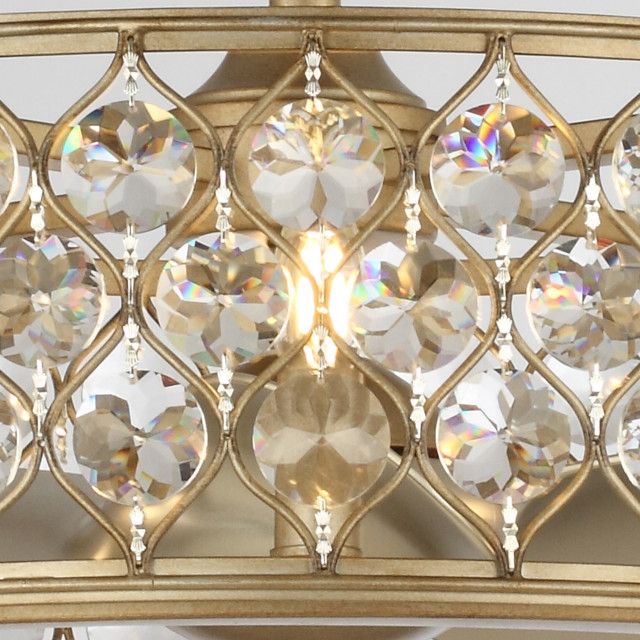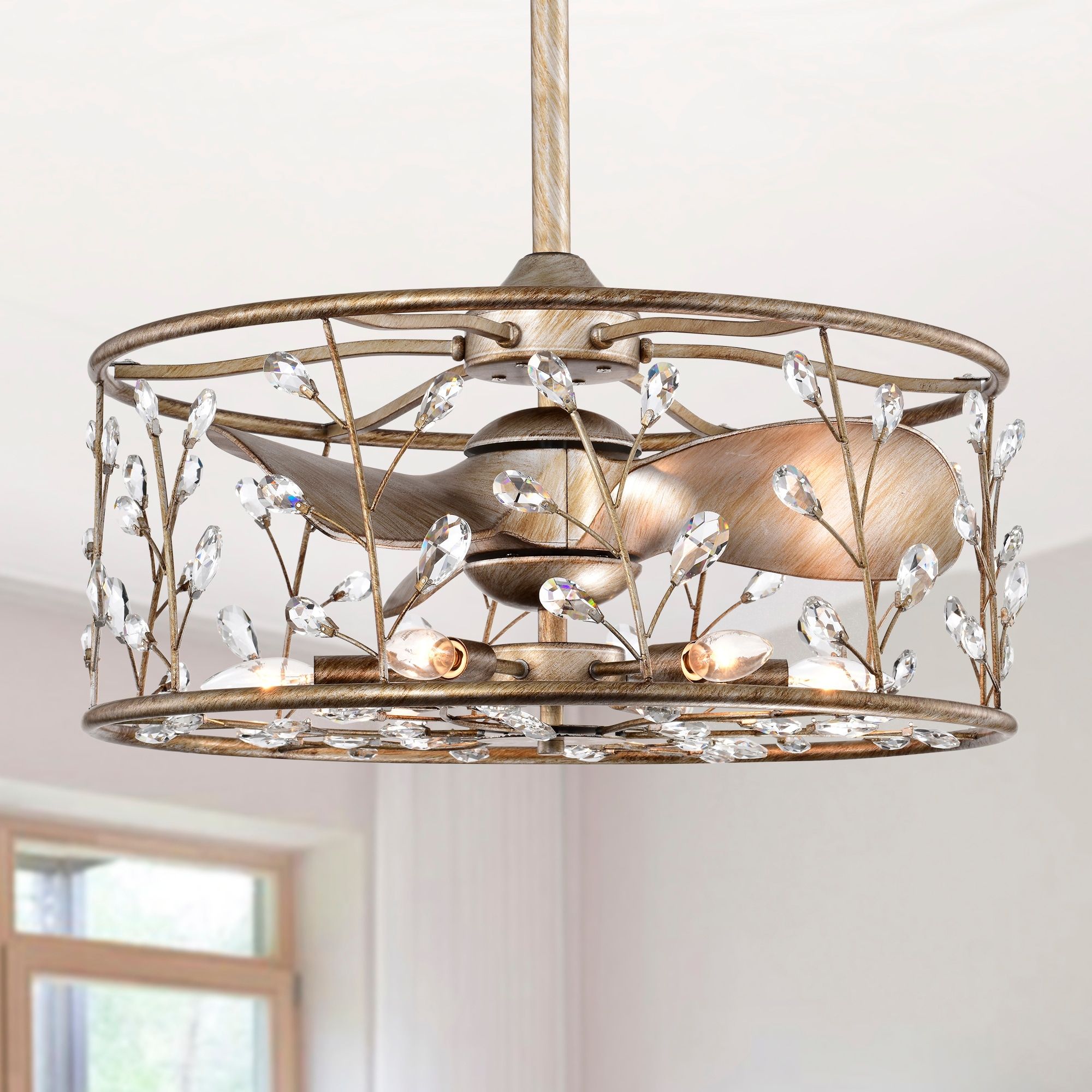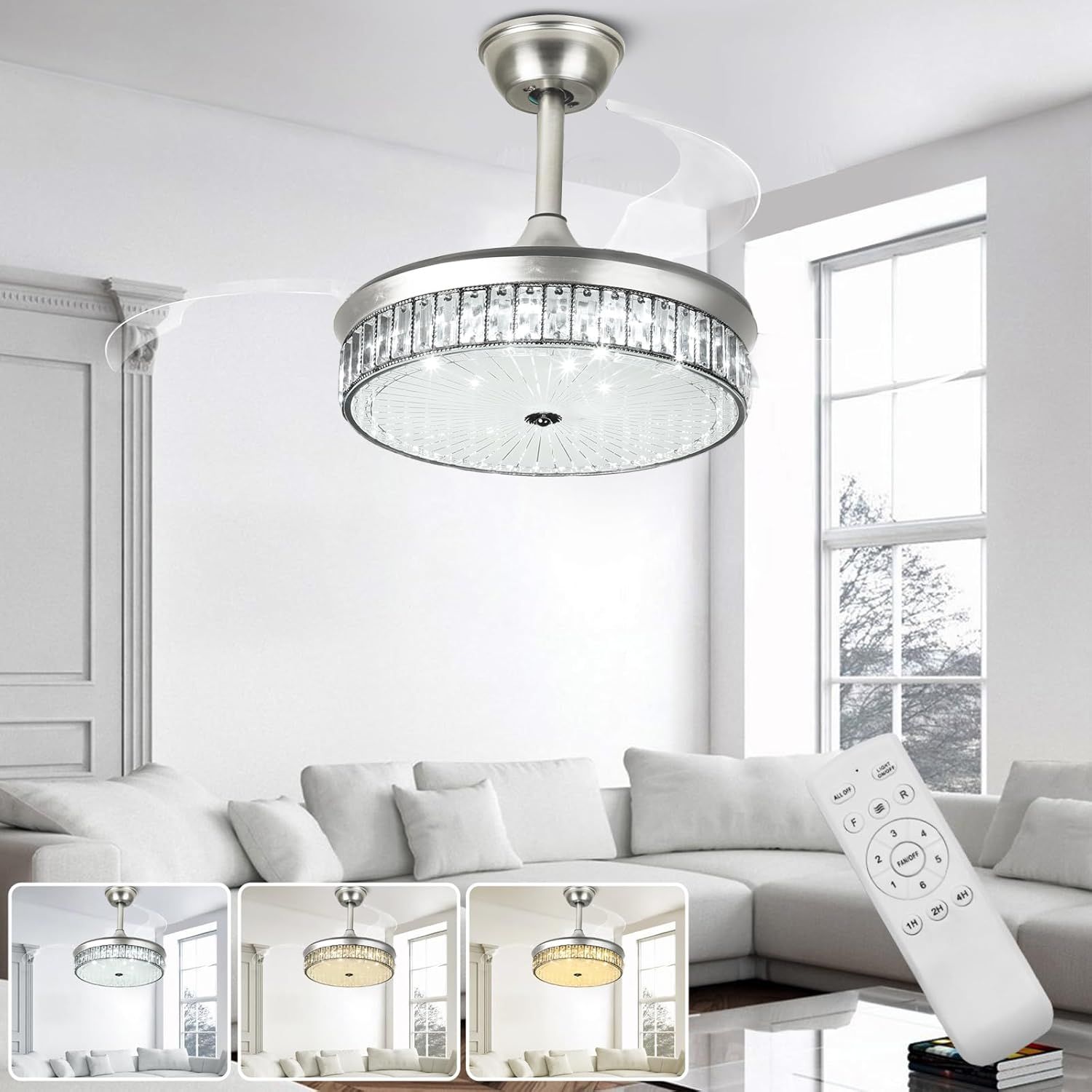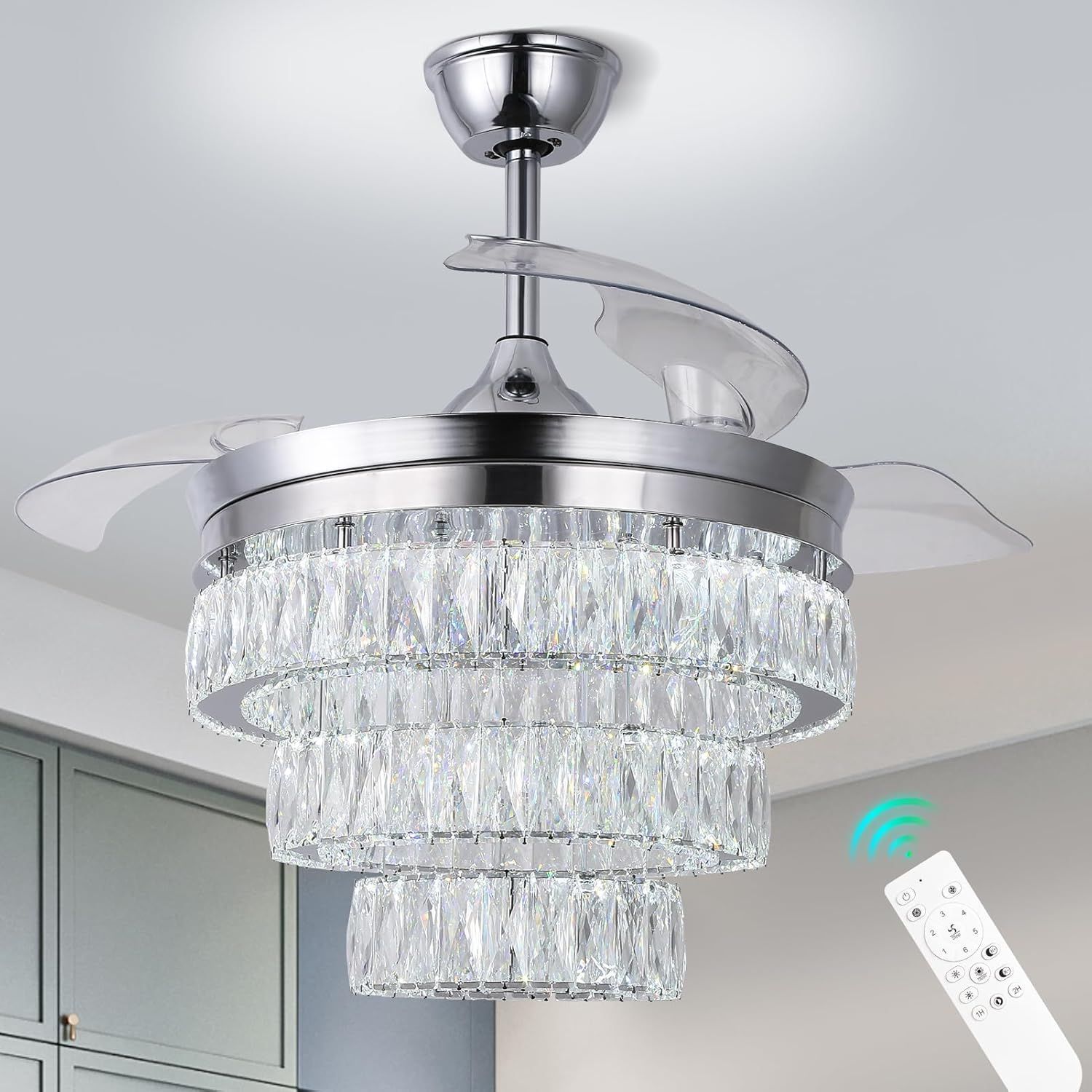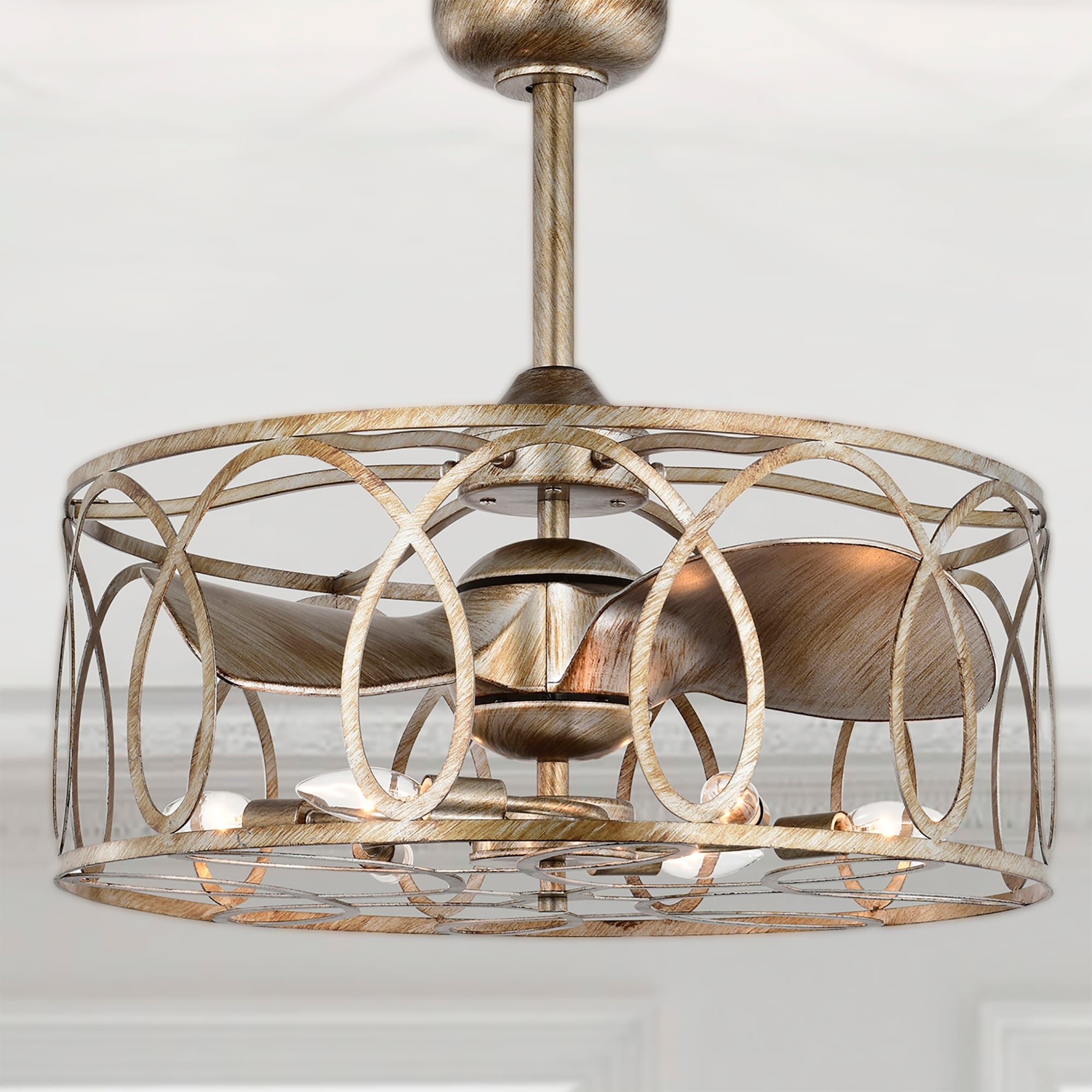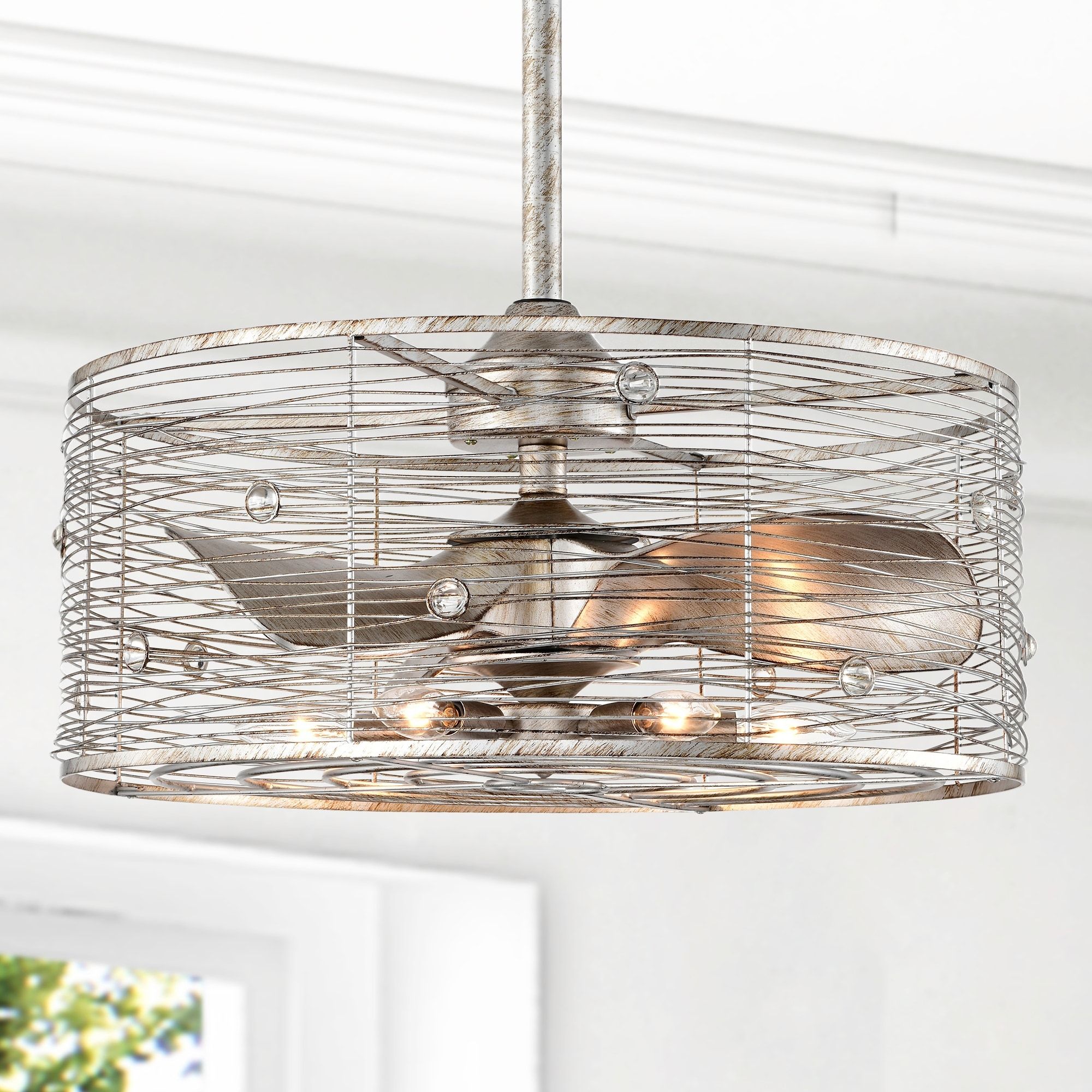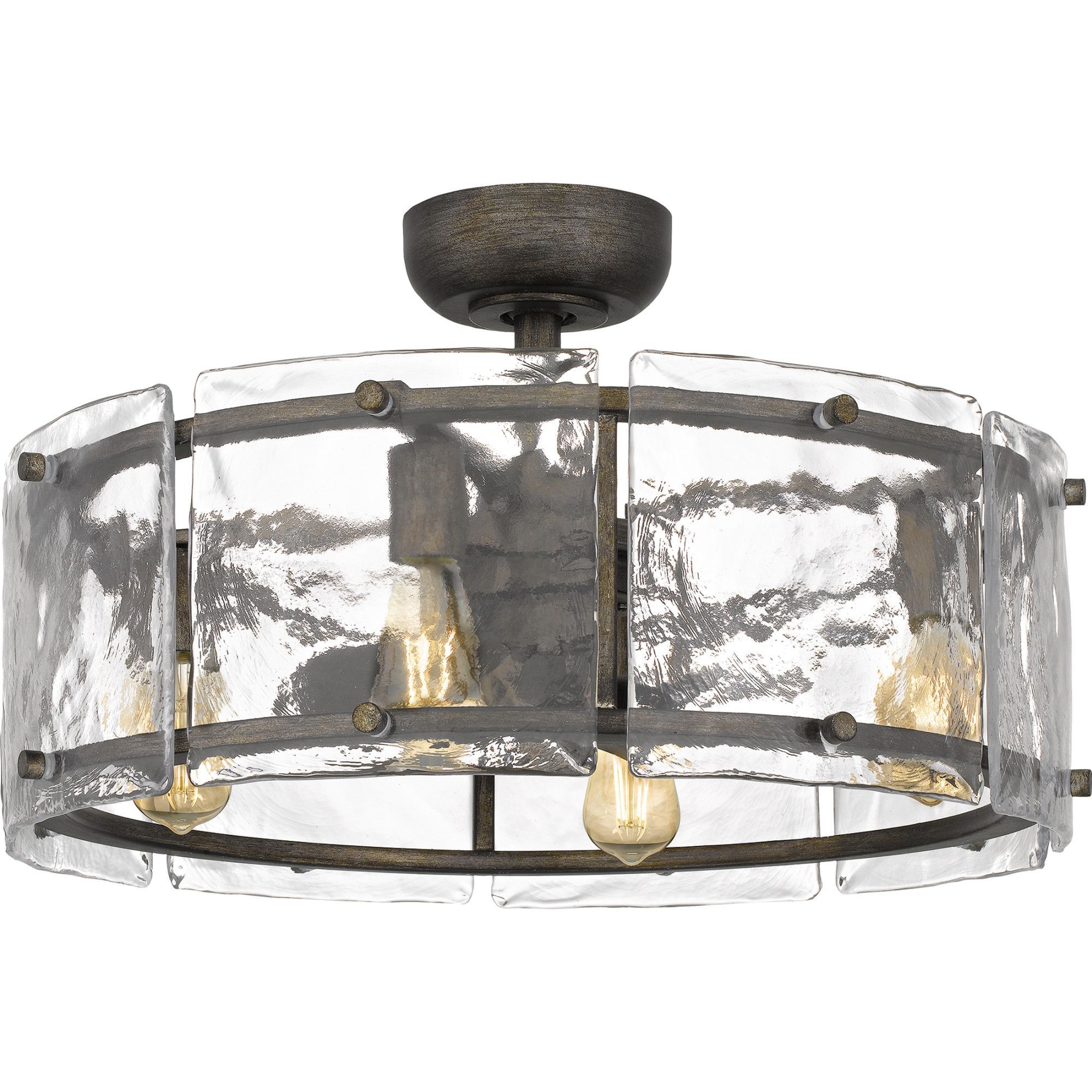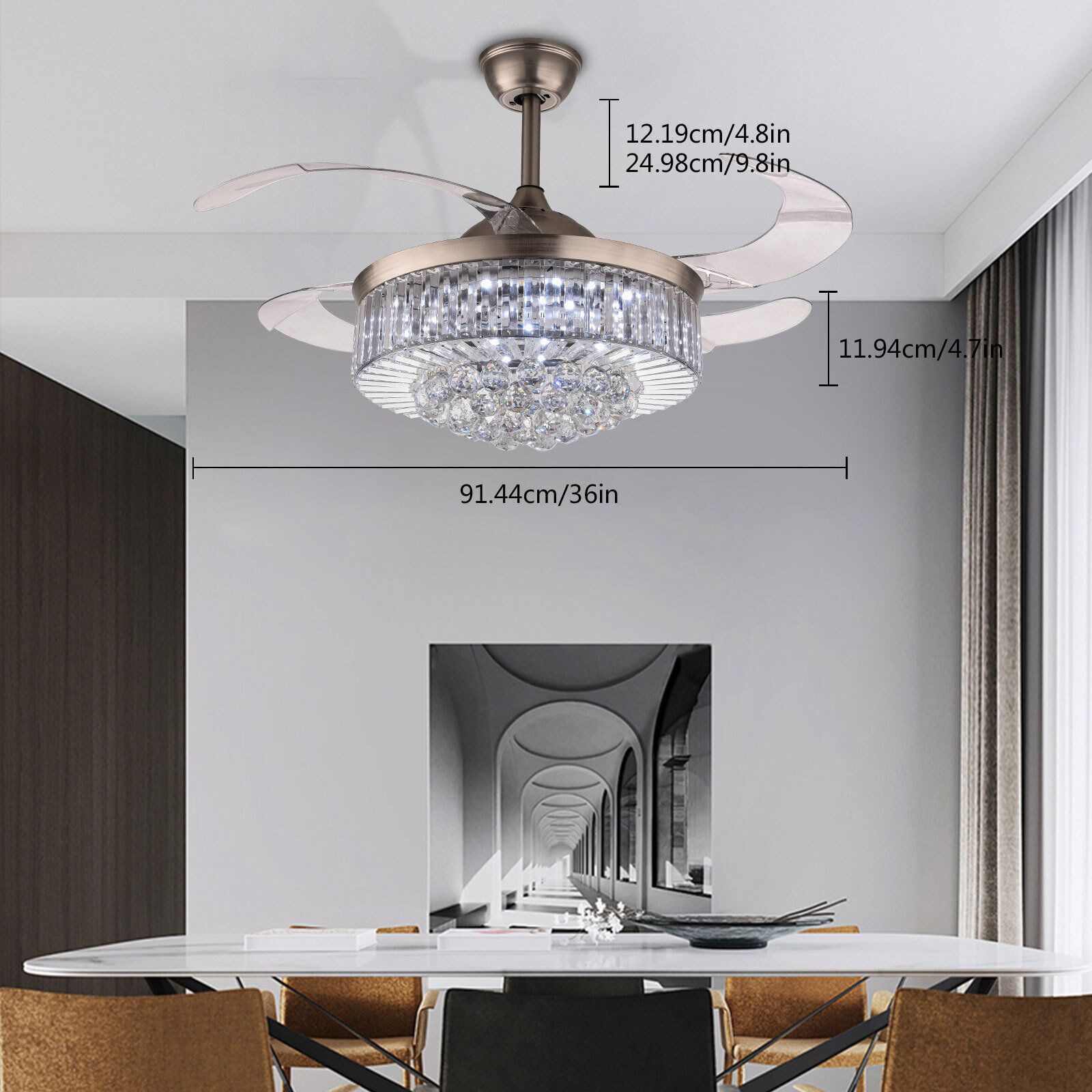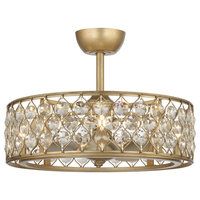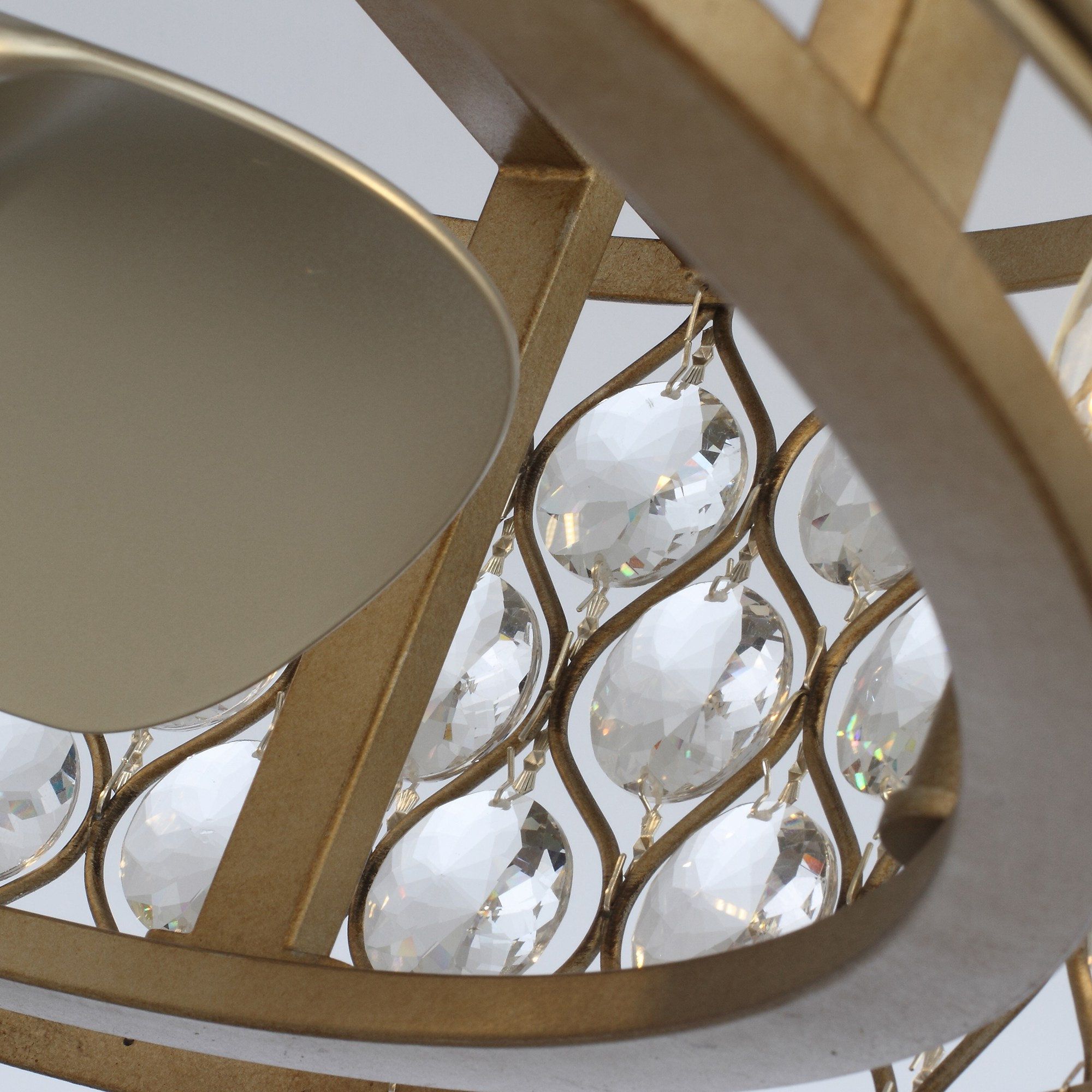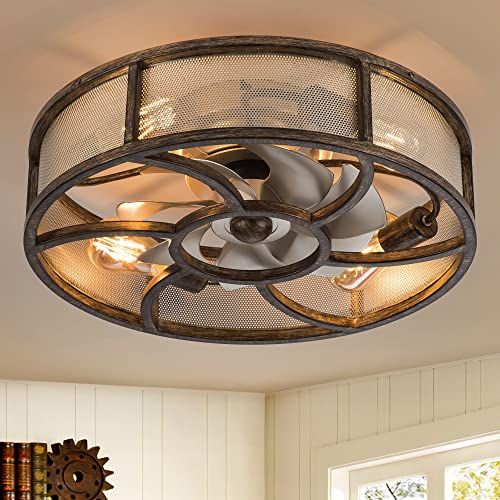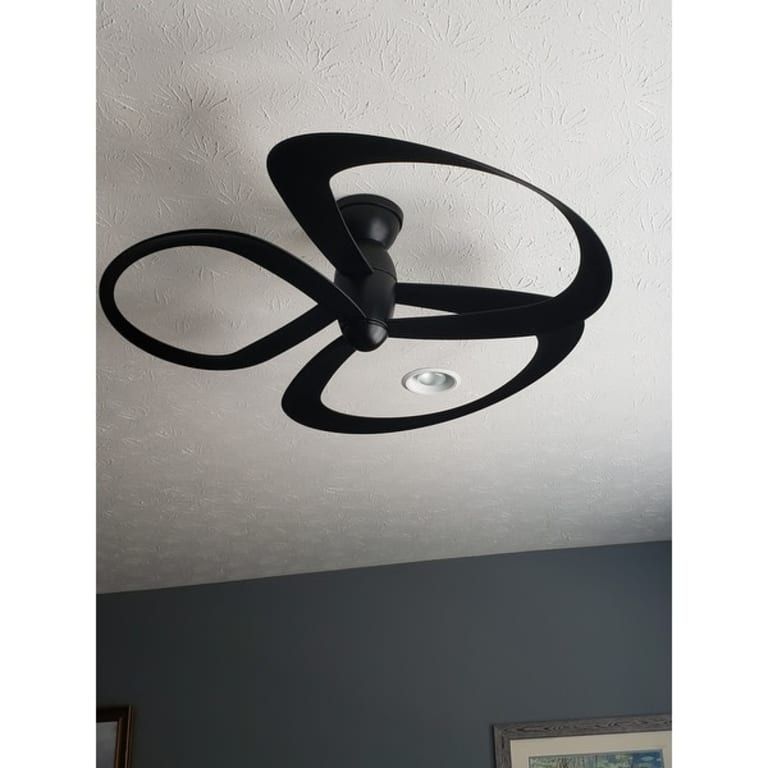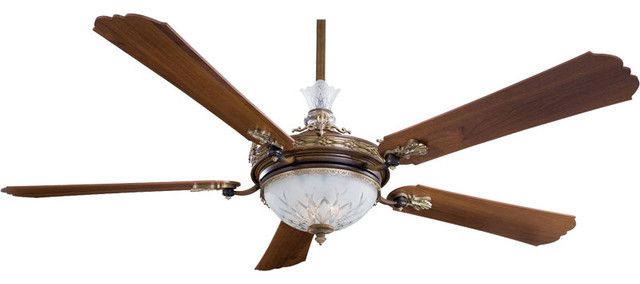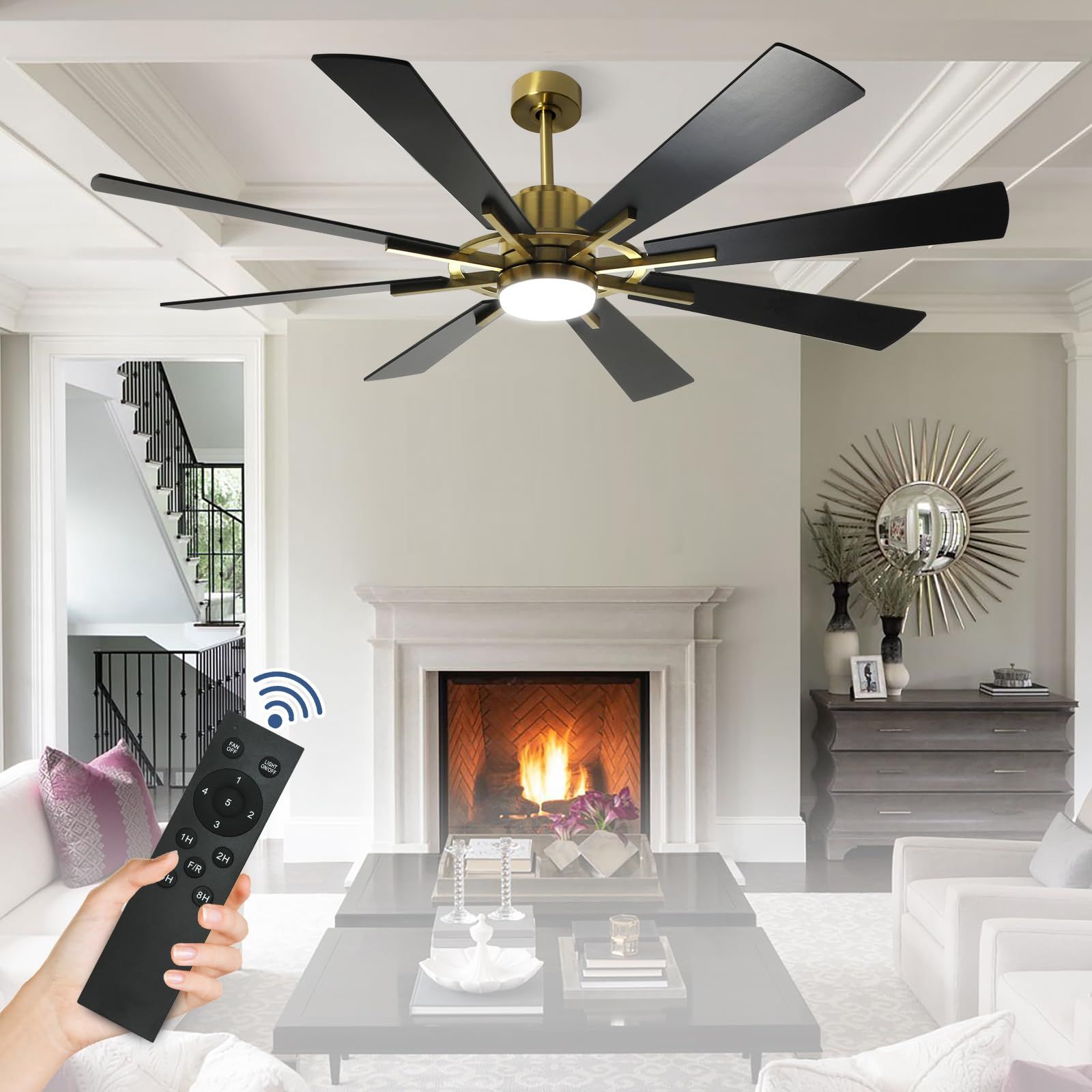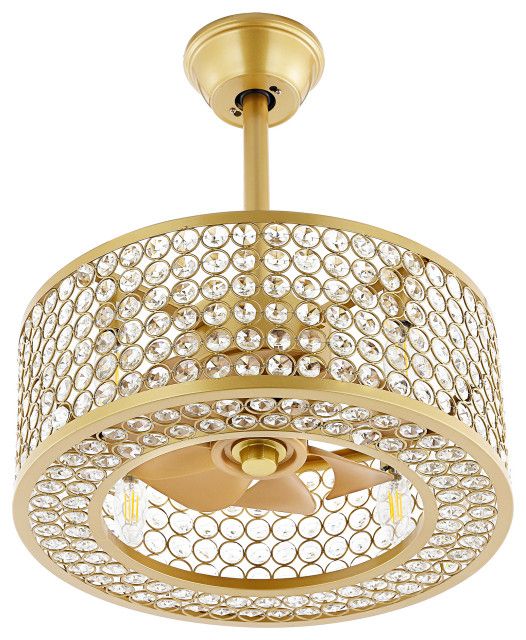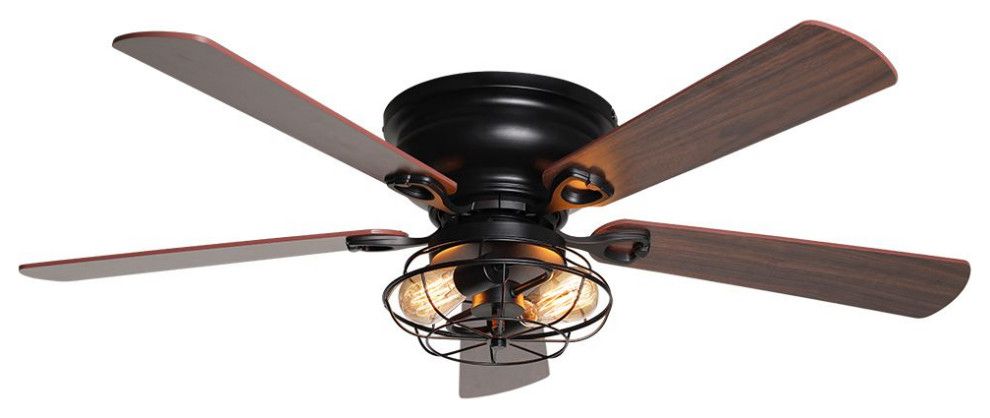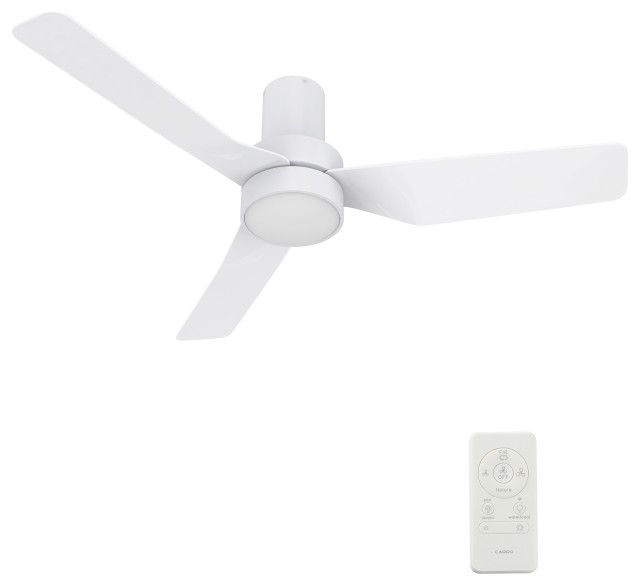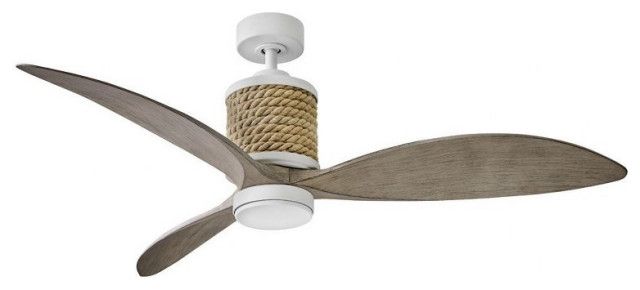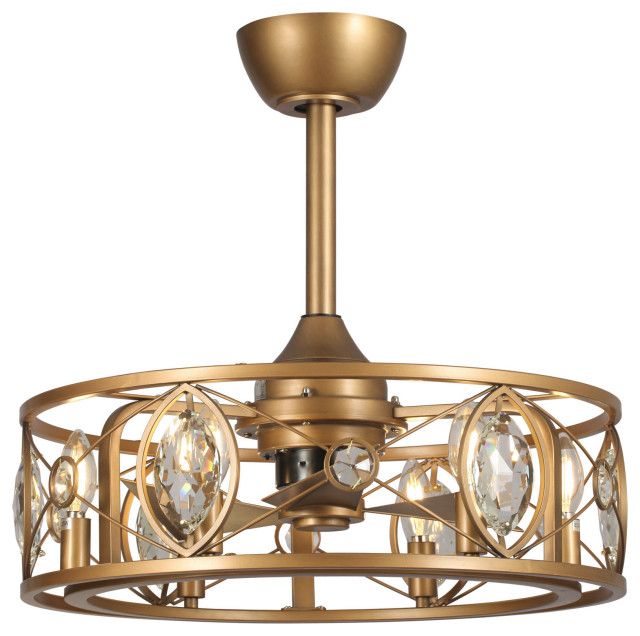Ah, the crystal fandelier! It’s the perfect blend of elegance and practicality, right? A stunning chandelier, and a fan to keep you cool. But, like any intricate piece of home decor, these beauties can sometimes throw a curveball. Flickering lights, wobbling blades, or a remote that seems to have gone rogue are all too common. Don’t worry, though. You don’t need to be an electrician to get your fandelier back in tip-top shape. This guide is here to help you diagnose and fix the most frequent fandelier malfunctions, so you can get back to enjoying the dazzling light and gentle breeze.
So, you’ve got a crystal fandelier, and it’s giving you grief? Maybe the lights are acting up, or the fan blades are doing a funky dance. Whatever the problem, you’re in the right place. This practical guide will walk you through the most common fandelier issues, providing easy-to-follow steps to get things working again. We’ll cover everything from simple fixes you can handle yourself to situations where you might need to call in a professional. Think of it as your personal fandelier repair manual, designed to make troubleshooting a breeze. Let’s get started, shall we? Remember, safety first: Always turn off the power at the breaker box before attempting any electrical repairs.
Flickering Lights: Diagnosing the Spark
Flickering lights are one of the most frequent complaints. There are a few potential culprits here.
- Loose Bulb: This is the easiest fix. Turn off the power and carefully check each bulb to make sure it’s screwed in tightly. Sometimes, vibration from the fan can loosen them over time.
- Faulty Bulb: Swap out the bulbs one by one. If a bulb is the issue, replacing it should solve the problem. Make sure you are using the correct type and wattage of bulb.
- Wiring Problems: This is where things get a little more complicated. Check the wiring connections inside the fandelier’s housing. Look for any loose wires or damaged connections. If you’re not comfortable working with electrical wiring, it’s best to call an electrician. You don’t want to get zapped!
- Dimmer Switch Compatibility: If you have a dimmer switch, ensure it’s compatible with the type of bulbs your fandelier uses. Some dimmers aren’t suited for LED bulbs, for example. The lights might flicker, or not work at all, if they aren’t compatible.
Unbalanced Blades: Stopping the Wobble
A wobbly fan is not only annoying, but it can also damage your fandelier over time. Here’s how to tackle an unbalanced fan:
- Check the Blades: Make sure all the blades are securely attached and that they are not damaged. Look for any cracks or bends. Are they all the same? If one has a slightly different shape, it might be causing the issue.
- Blade Alignment: Measure the distance from the ceiling to each blade tip. If the distances aren’t equal, the fan is unbalanced. You can often fix this by gently bending the blade arms until the tips are level.
- Balancing Kit: If the issue persists, use a fan balancing kit. These kits usually include a clip and small weights. Attach the clip to a blade and move it around until the wobble lessens. Then, attach a weight to the blade where the clip was positioned. Simple, and effective.
- Tighten Screws: Check all the screws on the blade arms and motor housing. Loose screws can absolutely contribute to an unbalanced fan. Tighten them up, and see if that does the trick.
Remote Control Woes: Regaining Command
Remote controls can be a real pain when they don’t work. Here’s how to troubleshoot remote control issues:
- Battery Check: This might seem obvious, but it’s often the problem. Replace the batteries in your remote. Make sure they’re installed the correct way.
- Receiver Issues: The receiver is inside the fandelier. Make sure there aren’t any obstructions blocking the signal from the remote. Also, check to be sure the receiver is properly connected to the wiring inside the fandelier. Sometimes, the connections can become loose.
- Pairing: Some remotes need to be paired with the fandelier’s receiver. Consult your user manual for instructions on how to pair the remote. It usually involves turning off the power, turning it back on, and pressing a specific button on the remote within a short time frame.
- Interference: Other remotes or devices can sometimes interfere with your fandelier’s remote. Try changing the dip switches on both the remote and the receiver to a different code. This will help prevent interference.
Motor Problems: When the Fan Won’t Spin
If the fan motor won’t start, here’s what to do:
- Power Check: Make sure the power to the fandelier is on at the breaker box. It sounds simple, but it’s a common mistake. Check everything.
- Motor Overload: Some fandeliers have a built-in overload protection. If the motor overheats, it might shut down. Let the fan cool down for a while and try again.
- Capacitor Problems: The capacitor helps the motor start. If the capacitor fails, the motor might not start. Replacing the capacitor can be a bit tricky, so you may need to call in a professional. It’s a quick and easy fix if you know what you’re doing.
- Motor Replacement: If the motor is completely dead, you might need to replace it. This can be a more complex repair, and it’s often best left to a qualified electrician. It could be the end of the line for the fan, unfortunately!
Noise Troubles: Addressing Annoying Sounds
Noisy fandeliers can be a real distraction. Here are some ways to address the racket:
- Loose Screws: Check all the screws, as mentioned before. Vibration can loosen screws over time, which can cause rattling or buzzing sounds. The blade screws are a common culprit.
- Blade Alignment: Make sure the blades are properly aligned and balanced. Unbalanced blades can cause a whooshing or thumping sound.
- Motor Bearing: If the noise is coming from the motor, it might be a bearing issue. You might need to replace the motor or have it serviced. This is where a professional might be needed.
- Obstructions: Make sure nothing is hitting the blades. Sometimes a decorative element might be rubbing against a blade, creating noise. Look around and see if you can spot any potential problems.
Crystal Care and Cleaning: Keeping Things Sparkling
Maintaining your crystal fandelier is key to its longevity and beauty. Here’s how to keep it looking its best:
- Regular Dusting: Dust your fandelier regularly with a soft cloth or a duster designed for delicate surfaces. This will prevent dust from building up and obscuring the sparkle of the crystals.
- Crystal Cleaning: For a deeper clean, you can use a mild soap and water solution. Avoid harsh chemicals or abrasive cleaners. Wipe down the crystals gently with a soft cloth, and then dry them thoroughly.
- Safety First: Always turn off the power before cleaning your fandelier. This is super important for your safety.
- Frequency: How often you clean your fandelier depends on your environment and the amount of dust and debris it collects. In general, dusting every few weeks and cleaning the crystals a couple of times a year should be sufficient.
So, there you have it: a comprehensive guide to troubleshooting common issues with your crystal fandelier. From flickering lights to wobbly blades and remote control glitches, we’ve covered the most frequent problems and provided practical solutions. Remember, safety always comes first, so turn off the power before you start any electrical work. By following these tips, you can keep your fandelier looking its best and functioning flawlessly for years to come. And don’t be afraid to call a qualified electrician if you’re not comfortable with a particular repair. Your beautiful fandelier will thank you. And your room will be brighter and cooler. Cheers to that. I hope this guide was helpful and you’re now equipped to tackle those fandelier issues like a pro! Happy fixing, and happy enjoying your sparkling, breezy space.
